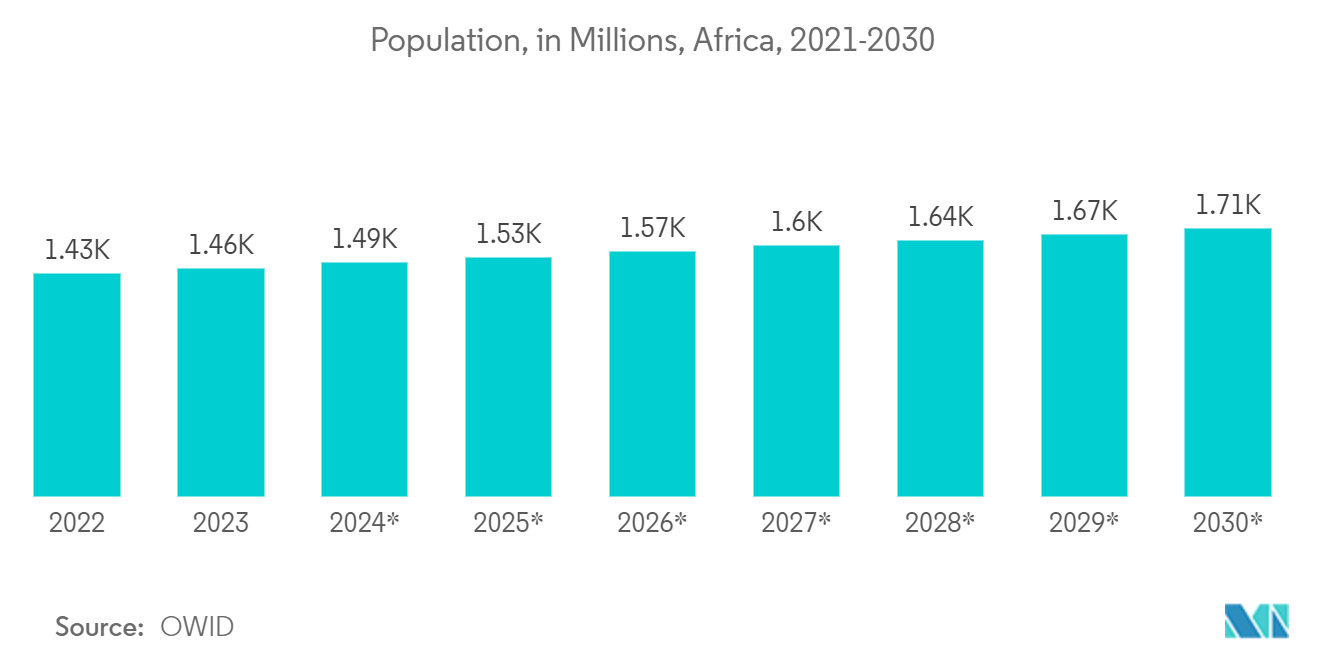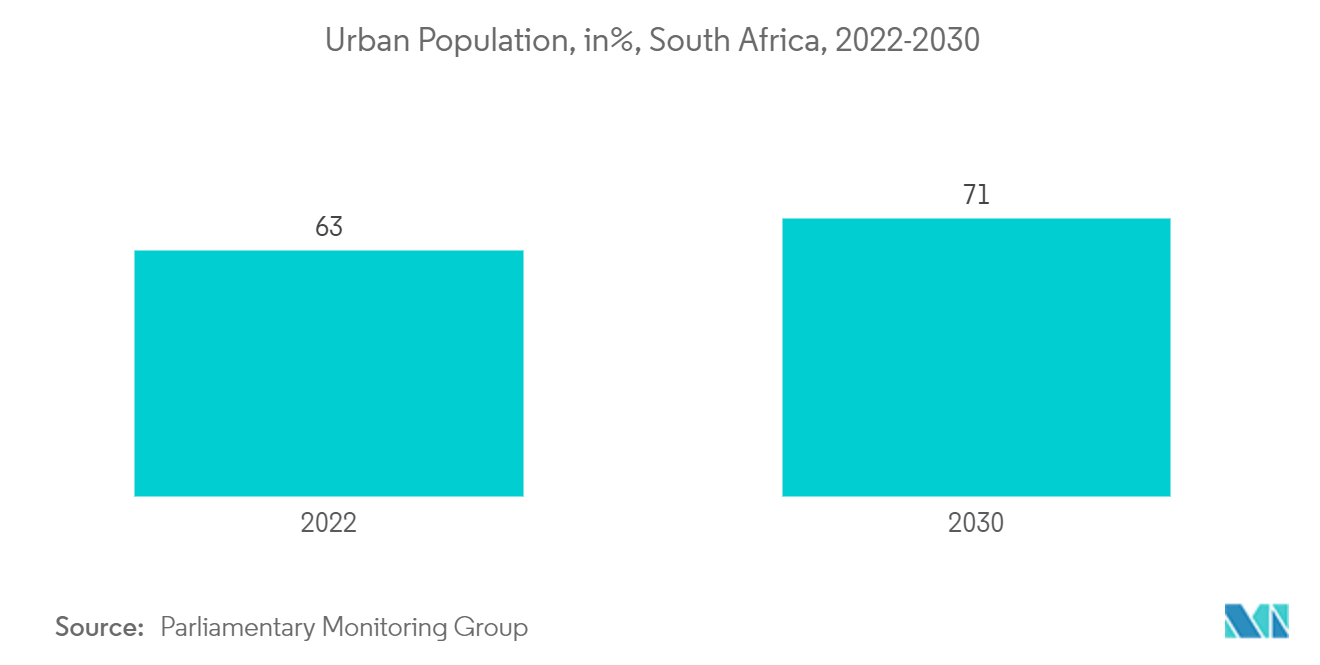Market Trends of Africa Satellite-based Earth Observation Industry
Government initiatives and investments is analyzed to drive the market during the forecast period
- According to UNCTAD, nearly 60% of the African population, or 794.7 million people, experienced moderate or severe food insecurity in 2021, up from 512 million individuals in 2014. At this rate, Africa needs to be on track to reach the SDG 2 nutrition and food security targets. Domestic problems worsen the food security situation in Africa despite the exceedingly difficult global environment. Africa underutilizes its capacity to feed itself.
- Satellite-based earth observation uses satellite data to monitor various aspects of agriculture, such as crop growth, water use, nutrient management, disease risk, yield estimation, etc. Satellite data can provide information about the crop status at different wavelengths, such as optical, radar, thermal, etc. Depending on the data type, additional information can be derived, such as vegetation indices, soil moisture, evapotranspiration, biomass, etc. Satellite-based earth observation can help farmers and decision-makers optimize resource use, increase crop productivity, reduce environmental impacts, and enhance food and water security.
- Further, with the growing population, as indicated in the graph, African governments and support partners must identify solutions to the current crisis while addressing the underlying causes of food insecurity across the continent. As a part of this, the space agencies in the region are launching satellites for efficient solutions, thereby contributing to the market growth rate.
- For instance, in January 2023, South Africa launched an Agri-Focused Satellite projected to produce USD 108 million in income. The success of Dragonfly's launch demonstrates South Africa's continued advancement in the space industry and will increase its attractiveness to investors. The launch will allow Dragonfly to proceed with its other projects, such as creating a constellation of satellites, while solidifying localization by enlisting the help of other businesses in this industry and similar industries. The satellite is the first in a constellation of seven that customer EOSDA (EOS Data Analytics) placed in low Earth orbit. Over the following three years, the constellation's final six satellites will be launched.

South Africa is analyzed to hold significant share during the forecast period
- South Africa's agricultural industry is by far the most advanced, successful, and varied in Africa. South Africa's highly developed agricultural sector will serve the country well in the face of economic and meteorological unpredictability. For Sub-Saharan Africa, adopting digital technology in agriculture represents a significant opportunity. Along the whole value chain, the rise of the mobile phone as a popular communication tool in combination with internet-based solutions might greatly increase access to financing for agricultural inputs. Unlocking agriculture opportunities in Africa will depend increasingly on digitalization and the efficient use of fertilizer and seeds.
- Further, the significant urbanizing in the nation is also analyzed to boost the demand for satellite-based earth observation services. Rapid urbanization is taking place in South Africa. Currently, 63% of the country's population lives in cities; by 2030, that number is expected to reach 71%. Eight out of ten people will reside in urban areas by 2050, increasing the need for minimal infrastructure.
- The government created an Integrated Urban Development Framework in light of this fact. In light of this, Cabinet approved the IUDF in April 2016. To accomplish the objectives of the NDP, it lays out principles, policies, and programs. Targeting government investments, programs, and projects requires spatial alignment as a planning goal. Various stakeholders, including the commercial sector and civil society, must strategically choose, prioritize, and coordinate their actions. These factors, alongside the growing collaborations in the earth observation services provision in the country, are bolstering the market growth rate.
- For instance, in November 2022, the South African National Space Agency (SANSA), in collaboration with its key partner, the South African Radio Astronomy Observatory (SARAO), recently released a beta version of the Digital Earth South Africa data cube platform. The highest industry standards for geometric and radiometric correctness and atmospheric correction are adhered to by SANSA, a custodian of decadal records of high-resolution imagery for South Africa in Analysis Ready Data (ARD) format.


